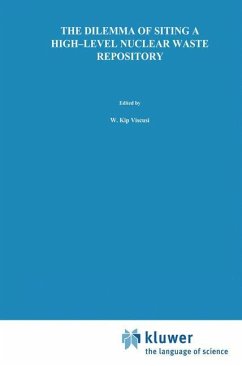This book explores the dilemma of siting a high-level nuclear waste (HLNW) repository. The authors examine siting conflicts from a variety of perspectives - political, psychological, and sociological - and identify the fundamental determinants of public opposition to waste disposal facilities as a means of designing more effective approaches to solving the typical siting dilemma. In assessing the causes of public opposition, the book draws on various surveys of attitudes toward the repository as a function of predictors such as perceptions of risk, benefits, and fairness. Exploring the factors that underlie public opposition to a repository enables one to understand why current siting efforts have failed. More importantly, the data are useful in defining what new strategies might be effective in obtaining public consent for a HLNW storage facility.
One of the primary conclusions is that the current impasse in the siting of a HLNW repository stems primarily from a lack of national consensus on the need for such a facility. The book also recommends the need for a `fair' siting process and the authors strongly favor a voluntary process to solve the siting dilemma. Such a process was initiated in the U.S. by the 1987 Nuclear Waste Policy Amendments Act; the process of finding a volunteer site has proven to be difficult, but there are signs that this process can work. Finally, the book focuses on the problems associated with siting a HLNW repository by treating this case as a generic example of the more basic siting dilemma. The analysis of public opposition and the recommendations we make for successful siting can be generalized to almost any attempt to site a noxious facility.
One of the primary conclusions is that the current impasse in the siting of a HLNW repository stems primarily from a lack of national consensus on the need for such a facility. The book also recommends the need for a `fair' siting process and the authors strongly favor a voluntary process to solve the siting dilemma. Such a process was initiated in the U.S. by the 1987 Nuclear Waste Policy Amendments Act; the process of finding a volunteer site has proven to be difficult, but there are signs that this process can work. Finally, the book focuses on the problems associated with siting a HLNW repository by treating this case as a generic example of the more basic siting dilemma. The analysis of public opposition and the recommendations we make for successful siting can be generalized to almost any attempt to site a noxious facility.








